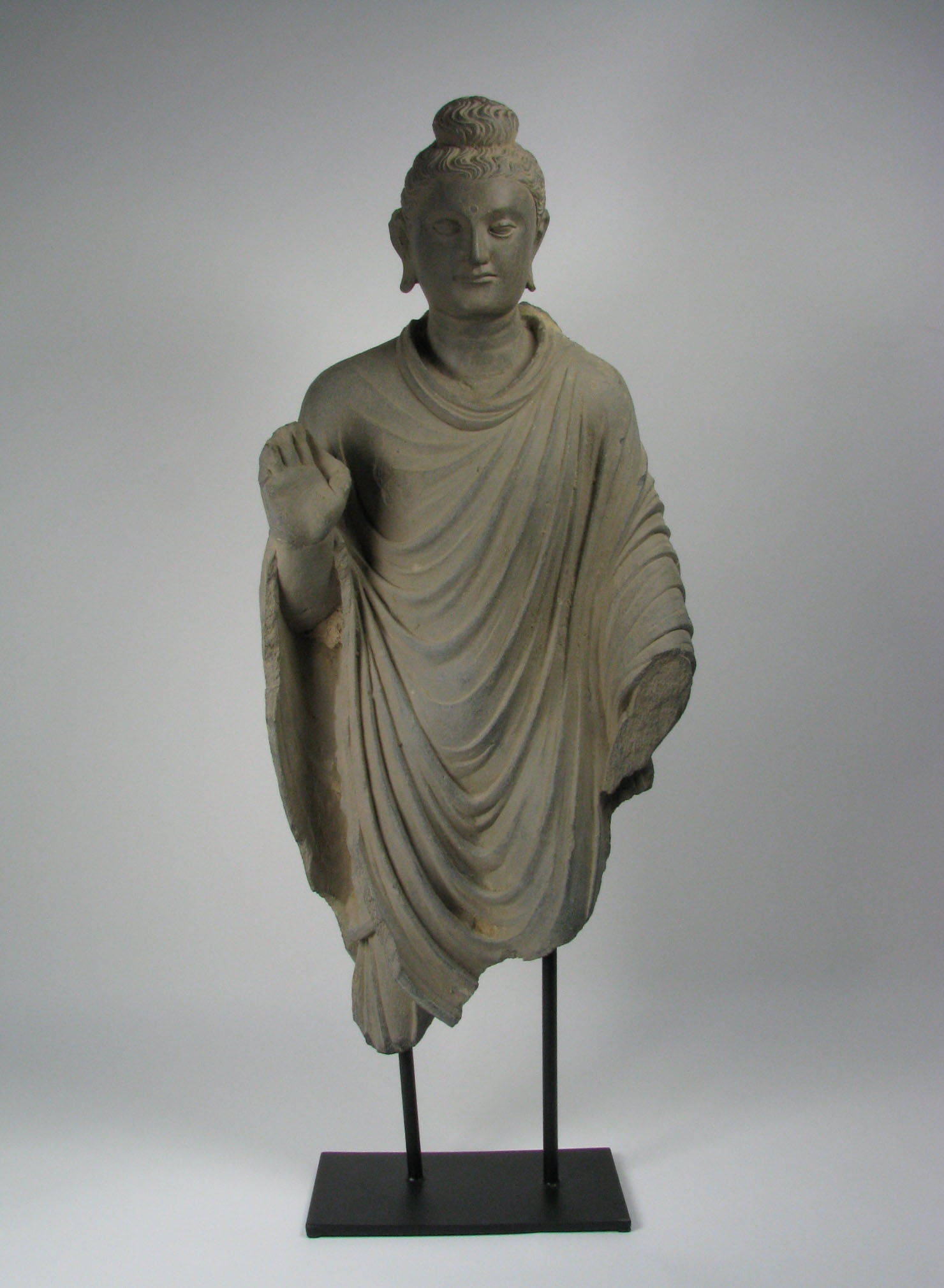Gandhara, Aristotle and Alexander the Great
/The Kingdom of Gandhara was a cosmopolitan culture much like the earlier Indus Valley civilisations and was located at the intersection of what is now north-west Pakistan and north east Afghanistan on the prosperous Silk Road.
The art we now prize so highly from this kingdom is defined by its fine sculptural detail, beauty and serenity. But what were the foundations of this style? To find out we have to look to Alexander the Great.
Much of the beauty of Gandharan art arises from its Greco-Buddhist blend that is a legacy of Alexander the Great who in 327 BC, at the age of 29, conquered the Achaemenid Empire – laying waste to the great armies of the Persian King Darius III who was at the time arguably the most feared ruler of the then know world. Alexander’s empire at this time was so vast it stretched from the Adriatic Sea to the Indus River.
A Gandharan Schist Sculpture Of Buddha, c. 3rd Century AD, dressed in a long flowing robe, the visage of fine features and benign expression with wavy hair pulled up and tied in a topknot, (75x35cm). Sold at one of our past auctions A$15,000
Gandharan sculpture's appeal arises from the unusual combination of Buddhism being blended with Grecian style. That the combining of these two cultures resulted in works of such beauty may be linked to Alexander’s fundamentally Aristotelian approach to law and order of the various regions he conquered and the diverse sociocultural environments now under his control.
As a young boy of 14, Alexander’s tutor was Aristotle and they continued to correspond at various times throughout Alexander’s life. Aristotle’s approach was to introduce an idea to someone rather than force it upon them.
Although ruthless in battle and in the habit of annihilating the armies and rulers he defeated, Alexander did not force his culture on inhabitants of the regions he conquered. Instead he fostered longer-lasting natural bonds through dialogue and by encouraging inter-cultural marriages, which very effectively stabilised the regions socioculturally.
The result of the blend rather than the clash of cultures we can see in the serene Gandharan sculpture of the period such as the work depicted above. This became a unique Gandharan style and a clear departure from the region’s traditional Buddhist sculpture. In earlier depictions, the Buddha appeared through symbols only. Now he took a human form and the sculptures were more personal, often depicting episodes of the Buddha’s life and teachings.
Main image: A Gandharan Schist Frieze (c.2nd-3rd Century AD), sculpted in relief with a central Buddha within a pillared arch way (36x54cm). Sold: at one of our past auctions A$10,000


